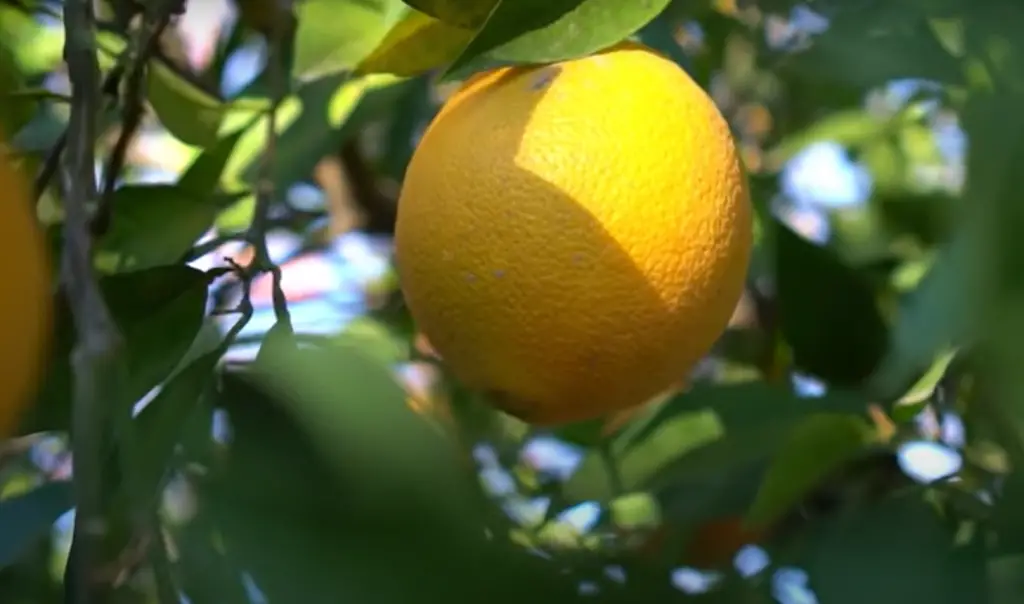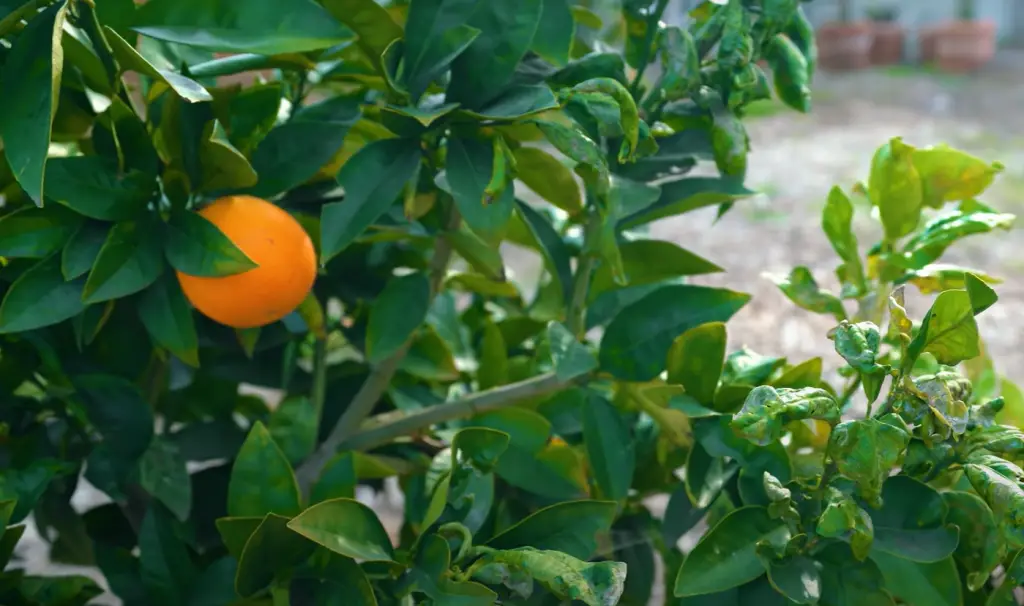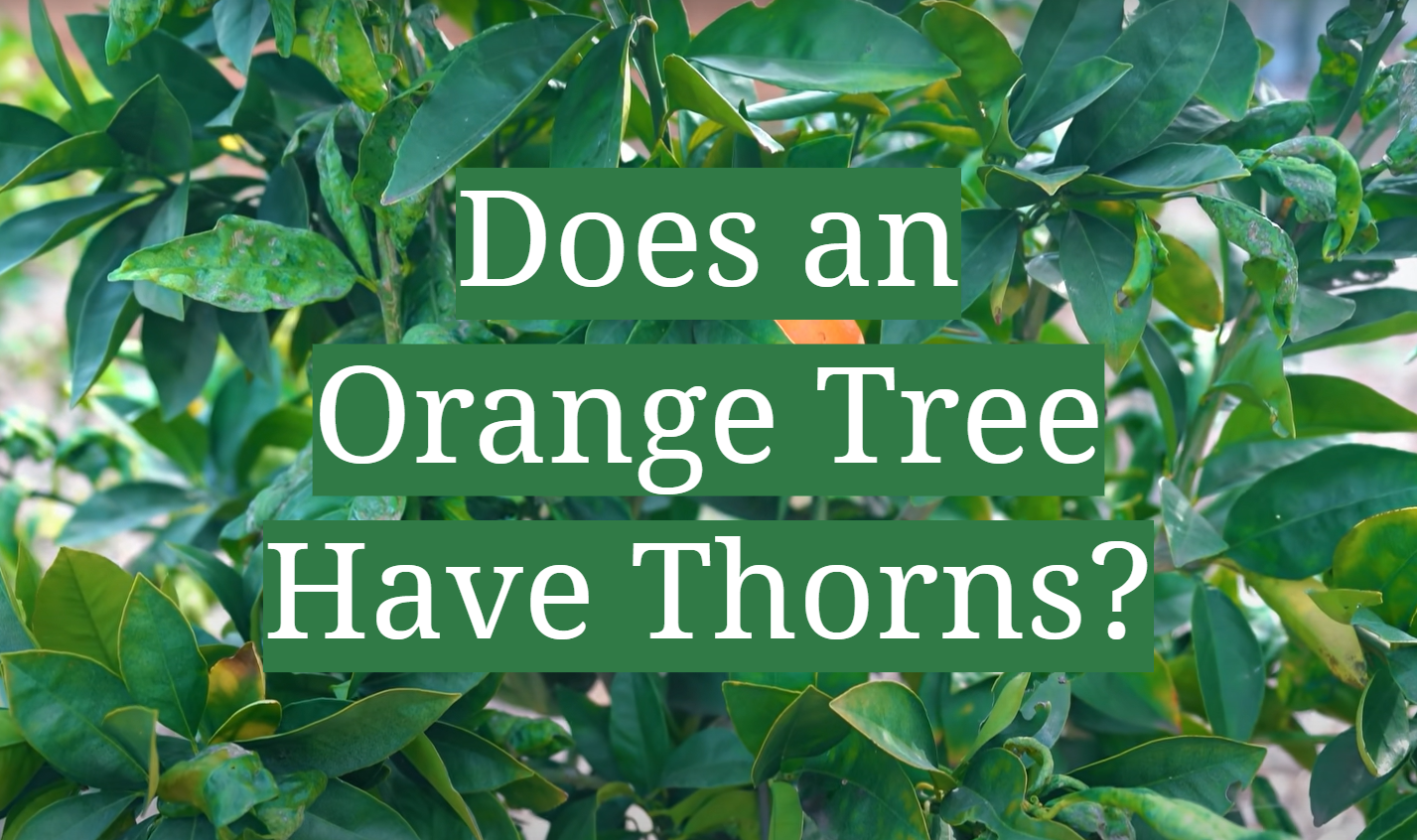Citrus trees are some of the most iconic plants in many warm climates, and they bring a lot of joy to people who have grown up plucking oranges off their backyard tree or visiting local farmer’s markets for fresh produce. But did you ever wonder how protective these beautiful trees can be? Did you know that some varieties of citrus trees actually have thorns on them – including orange trees? If so, what is the purpose of these sharp little spikes and how should we treat our beloved orange tree when it’s caring for us with this natural defense? In today’s article, we’ll explore why an orange tree may have thorns and provide tips on proper care for your own very special citrus-tree.
What Are The Thorns On The Plants?
Thorns are a common feature of many plants. They can vary in size and shape, from small prickles to large spines. Thorns may be straight or curved, thick or thin, smooth or serrated, and sharp or blunt. Various plant species have thorns as a defense mechanism against animals that attempt to feed on them, helping the plant protect itself from predation.

They can also help the plant conserve moisture by reducing surface area for transpiration. Thorns can also provide support for climbing plants. Some thorns even contain toxic substances that may injure animals when they come into contact with them. While all thorns serve similar protective purposes, each is unique to its plant species and environment. [1]
The most common type of thorn is the single-pointed spine. These are usually pointed and sharp, often less than an inch in length. This kind of thorn can be found on plants like roses, brambles, blackberries, and hawthorn shrubs.
Prickles are short and stubby thorns that are more rounded than spines. They typically don’t have a pointy tip and may even be flat or curved instead of straight. Prickles can be seen on species such as gooseberry bushes, raspberry canes, and some cacti.
There are also multi-pointed thorns called glochids that grow in clusters along stems or leaves of certain plants. Glochids typically look like small hairs but are much more difficult to remove than prickles or spines.
The shape and size of thorns depend on the species of plant, its environment, and the purpose they serve in protecting it from predators. While some plants have large, sharp thorns, others may have tiny prickles that are almost unnoticeable. Despite their differences, all types of thorns provide important protection for plants and help them thrive in a variety of landscapes. [2]
What are the Characteristics of Orange Trees?
Orange trees are incredibly hardy and resilient plants that have been cultivated for thousands of years, providing us with delicious fruit and essential oils. They typically grow in regions with a mild climate, though they can also survive in more extreme climates if properly cared for.
They thrive in sunny areas with well-drained soil. For optimal growth, these trees require at least eight hours of direct sunlight each day.
When mature, orange trees can reach heights of up to 10 meters (33 feet). The bark is smooth and gray, while the leaves are glossy and dark green. The flowers are small and white with five petals. The fruit has a shiny orange skin with many seeds.
Orange trees are also known for being incredibly productive and can yield up to 100 pounds of oranges per year. They typically reach maturity in 4-5 years or even sooner depending on the growing conditions. With proper care, they can live for centuries and continue producing high-quality oranges!

These trees are also relatively low maintenance compared to other fruit trees, making them a great choice for homeowners who want fresh citrus fruits in their backyard. Orange trees do require regular watering, especially during dry spells, but once established they rarely need pruning or spraying – unlike some other fruit trees. [4]
What Types Of Orange Trees Have Thorns?
Several types of orange trees have thorns, including the Citrus sinensis (sweet orange tree), Citrus aurantium (bitter orange tree), and Citrus limon (lemon tree). These species of oranges are all members of the citrus family and produce edible fruit.
The thorns on these trees are small, sharp spikes that can range in size from a few millimeters to several centimeters long. They typically grow along the stems and branches of the trees and can pose a hazard when handling them. Additionally, some varieties of oranges such as tangerines may also have small thorns, although they tend to be much smaller than those found on other citrus trees. In general, it is best to take extra precautions when pruning or cutting citrus trees, and wearing protective gloves can help minimize the risk of getting pricked by a thorn. [5]
Do Tangerine Trees Have Thorns?
Tangerine trees are generally not known for having thorns. They do, however, have sharp spines that grow out of the twigs and branches of the tree. These spines can cause minor cuts and scratches if you come into contact with them. Therefore, it is important to be careful when pruning or handling a tangerine tree. Additionally, if you plan on planting a tangerine tree in an area frequented by small children or pets, make sure to cover any exposed spines with tape or another material in order to protect their delicate skin. It is also wise to wear gloves when handling the plant in order to avoid any potential injuries.
In general, tangerine trees require very little maintenance and are fairly easy to care for. With proper pruning, water, and fertilizer, they can produce delicious fruit for many years. They also make a great addition to any garden or landscape due to their attractive foliage and sweet-smelling flowers.
Hopefully this has answered your question about whether or not tangerine trees have thorns. While they do not have true thorns, it is important to be aware of the sharp spines that can grow out of the branches in order to prevent injury when handling the plant. With proper care, these trees will provide a bounty of fruit for many years.
Are Orange Tree Thorns Poisonous?
Orange tree thorns are not poisonous. They may be sharp and can cause minor skin irritation if touched, but they are not toxic or poisonous in any way. Orange tree thorns are actually modified leaves that have hardened over time to provide protection for the trees from potential predators and pests.

While it is possible to get punctured by an orange tree thorn, it is highly unlikely to cause any serious damage or illness. However, caution should still be exercised when handling these thorns as they can still cause some degree of discomfort and pain if mishandled. When working around an orange tree, use protective gloves to avoid any contact with the thorns. Additionally, keep young children away from areas where there are orange trees so that they do not accidentally come into contact with the thorns. Taking these simple steps can help ensure everyone’s safety when working around orange trees. [7]
Pros And Cons Of Thorns On The Orange Trees
Pros:
- Thorns provide a natural barrier against animals that may try to feed on the fruit or damage the tree. This can protect both the trees and the oranges from harm.
- Thorns make it easier for farmers to prune and maintain their citrus groves, as they act like built-in pruning tools and help keep trees in shape.
- The thorns also offer some protection from certain pests such as aphids and scale insects, which if left uncontrolled could cause serious damage to citrus fruits.
Cons:
- The thorns can be dangerous for anyone working with or around them, making tasks such as harvesting or pruning potentially hazardous activities unless done with caution.
- The thorns can also damage harvesting equipment, reducing its effectiveness and potentially leading to higher costs for farmers.
- Thorns can cause damage to the trees if they are not properly maintained, as overgrowth and overcrowding of thorns may lead to infection or disease in the tree itself. [8]
Is It Worth Getting Rid Of Thorns On Citrus Trees?
Despite their prickly exterior, citrus trees can bring tremendous joy to a home. From the sweet juice of an orange to the tart flavor of a lime, these plants are often treasured for the bounty they provide. But if you’re serious about growing your own citrus tree, you may be wondering—is it worth getting rid of thorns on citrus trees?
When it comes down to it, removing thorns from citrus trees is not necessary in order to get great fruit. However, many people choose to do so because thorns make it difficult and potentially dangerous to harvest or prune the fruit. Not having thorns also makes harvesting easier for kids, which is another reason why some gardeners might decide to remove them.
Getting rid of thorns on citrus trees can require significant care and effort.
Additionally, if the thorns have been there for a while, they may cause discoloration or even leave scars on the bark. If you decide to go ahead with removing thorns from your citrus tree, it is important to be diligent and careful during the process.
If you’re looking for ways to reduce thorns on a citrus tree without actually removing them, there are other options available as well. For example, some gardeners choose to prune new growth in order to keep their plants thin and less prickly over time. In addition, adding mulch around the base of the tree can help keep thorns at bay and prevent them from spreading to other parts of your garden. [9]
How to Care for a Citrus Tree?
Caring for a citrus tree is easy and rewarding. Here are some tips on how to do it:
- Watering – Citrus trees need plenty of water to stay healthy and productive, especially during the summer months when temperatures are higher. The best way to water your citrus tree is to use a drip irrigation system that delivers water directly to the roots of the tree at regular intervals. This will help prevent overwatering or underwatering which can both cause damage to citrus trees.
- Fertilizing – Fertilizers are important for helping trees get the nutrients they need for growth and production of fruit. Make sure you use a fertilizer specifically designed for citrus trees and apply it according to the directions on the package.
- Pruning – Pruning your citrus tree helps keep it healthy and encourages new growth. It also helps shape the tree so that it is aesthetically pleasing and easier to care for. When pruning, always use sharp tools and make sure not to prune too much off at one time or you could damage the tree.
- Pest Control – Citrus trees can be prone to pests such as aphids, scale insects, mealybugs, and mites which all feed on the leaves or fruit of the tree. Keeping an eye out for these pests and treating them quickly with an appropriate pesticide is important for keeping your citrus tree healthy. [10]
- Proper Location – Make sure you choose a location that has plenty of sunlight for your citrus tree. While these trees can tolerate some shade, they won’t produce as much fruit if the area is too shady. Also be sure to plant your citrus tree in soil that drains easily and isn’t too wet or dry.
- Proper Harvesting – When harvesting your citrus fruits, be sure to do so carefully. You will want to avoid damaging the stems and leaves of the tree as this can cause it to become weakened or diseased. Also make sure not to leave any unripe fruits on the tree for too long or they may rot and attract pests. [11]
FAQs
Does orange blossom have thorns?
Yes, orange blossom plants do have thorns. The thorns are usually small and sharp and can cause skin irritation if touched.

It is best to wear gloves and long sleeves while handling an orange blossom plant. Additionally, it is important to prune the plant regularly to keep the thorns from becoming too numerous or dangerous.
How do I know if I have an orange tree?
If you’re unsure whether or not you have an orange tree, there are a few things to look for. First, check the leaves of the plant – orange trees typically have glossy dark green leaves with a pointed tip and serrated edges. Additionally, look for white blossoms that have five petals each in the springtime – this is often indicative of an orange tree. Finally, if oranges appear on your tree throughout the summer months, it’s likely that you own an orange tree! If you still need help confirming what type of tree you have, contact your local cooperative extension office for assistance. They can help identify the species of any trees growing on your property or in your area.
What are the characteristics of an orange tree?
An orange tree is a deciduous citrus tree, typically growing to a height of 5–7 meters (16–23 ft). It has dark green leaves with serrated edges and fragrant white flowers. The fruit of an orange tree can be round or oblong in shape, ranging from 2-5 inches in diameter, and usually takes around 8-12 months to mature. The skin color ranges from greenish yellow to deep orange depending on the variety. Orange trees are known for their sweet aroma when in bloom, as well as their sweet tasting fruits. They are also quite tolerant of drought conditions and can withstand colder temperatures than some other citrus varieties. Additionally, they are relatively easy to maintain with minimal pruning required.
Can you eat an orange straight from the tree?
Fresh oranges picked straight from the tree are sweet and juicy, with a flavor that is much more intense than store-bought oranges. However, if you live in an area where citrus trees are not commonly found, it may be difficult to find a ripe orange on the tree. Additionally, there are some types of oranges that cannot be eaten directly from the tree due to their acidity levels or because they do not have a pleasant taste when fresh. In these cases, it’s best to wait for them to ripen off the tree before eating them. Oranges picked right off the branch can also contain pests or diseases that could affect your health if consumed without proper washing and preparation. Regardless of whether you pick your oranges straight from the tree or buy them at a store, it is important to wash them well before eating in order to remove any dirt and pests. Once you have washed and inspected the oranges, you can enjoy their sweet taste and nutritional benefits!
Useful Video: What Kind of Citrus Tree Has Thorns?
Final Thoughts
In conclusion, tending to your orange tree can be hugely rewarding. Not only can you expect a harvest of delicious oranges every year, but there’s something incredibly satisfying about maintaining such an important part of nature. With the presence of thorns on some varieties, citrus trees also act as a first line of defense against pests and diseases which threaten their long-term health and survival.
So if you’re dreaming of fresh juicy oranges simply plucked from the garden or even selling your harvest as a positive side hustle, remember to take good care of your precious orange tree. From regular pruning to proper fertilization and pest control, putting in the effort to care for your citrus tree now will pay off in spades in terms of bumper yields and improved quality over time. Who knows? You could become the local orange connoisseur before you know it!
References:
- https://housing.com/news/thorny-plants/
- https://www.lovetoknow.com/home/garden/thorns
- https://oliveoilcorfu.gr/characteristics-of-orange-trees/
- https://www.botanical-online.com/en/botany/orange-tree-characteristics
- https://gardeninghood.com/does-the-orange-tree-have-thorns/
- https://gardeninglord.com/what-kind-of-orange-trees-have-thorns/
- https://gardenine.com/citrus-trees-with-thorns/
- https://sumogardener.com/why-does-orange-tree-have-thorns/
- https://www.oregonlive.com/hg/2022/08/is-it-ok-to-cut-off-citrus-tree-thorns-ask-an-expert.html
- https://lakelandyardandgarden.com/blog/47778/caring-for-citrus-trees
- https://www.rhs.org.uk/fruit/citrus/grow-your-own










Leave a Reply
View Comments